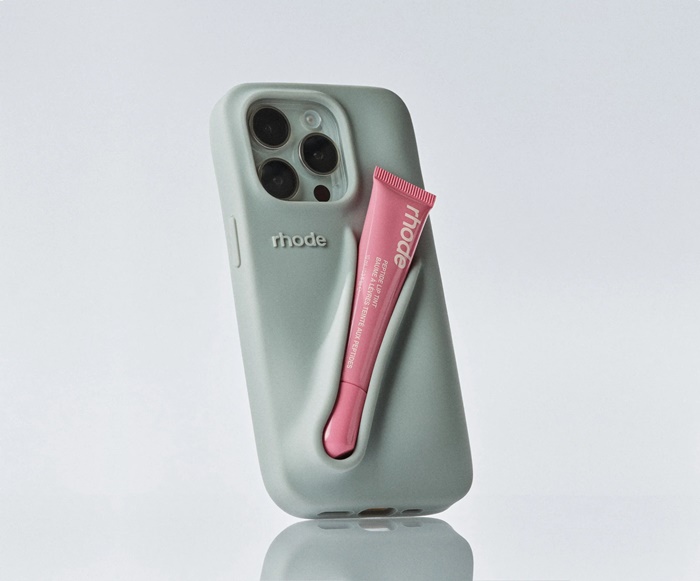
With the world of dog gear not only growing, but thriving, dog owners can often feel like they’re behind when it comes to the latest piece of gear – and that right now is dog eye protection, also called “Doggles”.
Protective eyewear in the world of humans is not uncommon, but do our dogs really need a pair of sunglasses to prevent potential eye problems? We spoke to veterinary ophthalmologist about eye disease, eye surgery and how important UV protection from a pair of doggles is for prevention, and recovery.
Do Dogs Really Need Sunglasses?
It’s a bright, sunny day and you’re heading out for a walk with your furry friend. As you slip on your sunglasses you glance over at your dog squinting in the sunlight. Should you get your dog a pair of cool shades too? Dog sunglasses are growing in popularity, but are they really necessary? This article will look at the benefits and drawbacks of dogs wearing sunglasses to help you decide if it’s right for your pup. We’ll explore dog eye anatomy, UV damage risks, breed and lifestyle factors, and tips for selecting and putting on doggie sunglasses. While sunglasses do protect dogs’ eyes just like ours, there are also some alternatives to consider. Read on to get the full scoop!
Canine Eye diagram, provided by merckvetmanual
Dog Eye Anatomy
A dog’s eye anatomy is quite similar to a human eye, but there are some key differences. The visible part of a dog’s eye includes the sclera, iris, pupil, and cornea.
The sclera is the white part of the eye that surrounds the iris and provides structure and protection.
The iris is the colored part of the eye which controls the size of the pupil to regulate light entering the eye.
The pupil is the circular opening in the center of the iris that allows light to enter the eye. It expands and contracts to control how much light passes through.
The cornea is the transparent layer covering the front of the eye. It helps focus light rays entering the eye onto the retina at the back of the eyeball.
Inside the eyeball, dogs have a lens, vitreous humor gel, retina, and optic nerve like humans do. One difference is that dogs have a third eyelid called a nictitating membrane that can sweep across the eye to provide extra protection and lubrication. Dogs also have a reflective layer called the tapetum lucidum behind the retina that improves their night vision. Overall, the canine eye is designed to provide sharp daytime vision and enhanced low light vision.
UV Damage to Dog Eyes
Ultraviolet rays from the sun are just as harmful to dog eyes as they are to human eyes. In dogs, UV rays can cause a number of eye issues including:
Photokeratitis – Also known as snow blindness or welder’s flash, photokeratitis is essentially a sunburn on the cornea, the clear outer layer of the eye. It is usually caused by exposure to UVB radiation. The effects are temporary but very painful, causing redness, inflammation, squinting, discharge, and corneal haze.
Pterygium – Chronic UV exposure can cause fleshy pink tissue to grow over the cornea. This condition, called pterygium, starts slowly but can eventually obstruct vision if it grows over the pupil. Pterygium is irreversible without surgery.
Cataracts – Cataracts in dogs are a clouding of the lens inside the eye that leads to hazy or blurry vision. There are several causes of cataracts but UV radiation is one factor that can contribute to their development, especially in dogs that spend a lot of time outdoors. Cataracts progressively get worse over time.
Cancer – Like humans, dogs can develop various forms of eye cancer due to UV radiation. The most common is squamous cell carcinoma of the cornea and other parts of the eye. Eye cancer is serious and requires surgery and/or radiation treatment.
UV light reflects off surfaces like snow, water, and concrete. This reflected UV can nearly double the exposure. Dogs with light-colored eyes are especially vulnerable as less pigment means less protection.
Do Dogs Need Sunglasses?
Whether or not dogs need sunglasses is a common question for pet owners. There are pros and cons to consider when deciding if sunglasses are right for your pup.
Pros of Dogs Wearing Sunglasses
Protect eyes from UV damage – Dog eyes can be damaged by prolonged exposure to ultraviolet (UV) rays from the sun, just like human eyes. Sunglasses shield their eyes from UV rays.
Avoid eye conditions – UV exposure can contribute to eye conditions like cataracts, corneal ulcers, and cancer of the eyelids and cornea in dogs. Sunglasses may help reduce these risks.
Comfort in bright light – Some dogs are sensitive to bright sunlight. Sunglasses can make being outdoors more comfortable for light-sensitive dogs.
Safety for dogs with light-colored eyes – Dogs with blue, green, or hazel eyes are more prone to UV damage and may benefit more from sunglasses. The pigment melanin protects brown eyes better.
Fashion statement – Sunglasses on dogs are seen by some owners as a cute fashion statement or accessory. Some dogs don’t seem to mind wearing them.
Cons of Dogs Wearing Sunglasses
Unnatural for dogs – Dogs’ eyes and vision have evolved for millions of years without sunglasses. Their eyes and eyelids may protect them sufficiently without human intervention.
Risk of eye irritation – Ill-fitting sunglasses could rub on the skin around the eyes, causing irritation. Dogs may try to remove the sunglasses by pawing at them.
Limited vision – Sunglasses reduce peripheral and upward vision for dogs. This could impact their ability to play and observe their surroundings.
Not necessary for all dogs – Dogs with deeper set eyes that create more shade and dogs who don’t spend prolonged time in bright sunlight may not need sunglasses.
Expense – Dog sunglasses are an added expense for pet owners. Cheap sunglasses may be of inferior quality.
Overall, the need for dog sunglasses depends on factors like eye color, eye conditions, time outdoors, and sensitivity to sunlight. Consulting your veterinarian can help determine if sunglasses would benefit your dog. Proper fit and high-quality sunglasses are important to protect your dog’s vision and comfort.
Alternatives to Sunglasses
While sunglasses are one option to protect your dog’s eyes from UV damage, there are other effective alternatives as well.
Some options to consider instead of sunglasses include:
Eye Drops – There are eye drops formulated specifically for dogs that contain nutrients that help protect the eyes from UV damage. These are easy to administer directly into the eyes.
Goggles – Protective dog goggles cover more area around the eyes than sunglasses. They have straps that wrap around the head for a secure fit. These are ideal for dogs that are very active outdoors.
Hats/Visors – A wide brim hat or visor can shade a dog’s eyes from overhead sunlight. This doesn’t offer as much protection as sunglasses or goggles, but it’s a simple shading option.
Limit Time in Sun – One of the best things you can do is limit your dog’s direct exposure to sunlight during peak UV hours. Walk them earlier in the morning or later in the evening when the suns rays are less intense.
Provide Shade – When your dog is outdoors, make sure they have access to shaded areas to retreat from the sun. A covered patio, tree shade, or even a tent offers relief.
Eye Creams – There are over-the-counter eye creams and serums containing antioxidants that can be applied around a dog’s eye area to help protect from UV damage.
The right eye protection choice will depend on your dog’s needs and activities. But sunglasses are not the only option for guarding your dog against harmful UV rays. Considering these sun safety alternatives for dogs can help keep their eyes healthy.
Breed Differences
All dogs have the same basic eye anatomy, but visual abilities can vary between breeds. This is an important consideration when deciding if your dog needs sunglasses.
Sighthounds like Greyhounds have incredible long-distance vision but are more sensitive to sunlight. Their large rounded eyes are more exposed to UV rays. Sunglasses provide useful protection for these breeds.
Herding breeds like Collies have exceptional motion sensitivity due to their history of monitoring livestock. But they are less fazed by glare from the sun. Sunglasses may not be as necessary for herding dogs.
Retrievers and hunting dogs are adept at seeing movement in low light. But they are less bothered by moderate daylight conditions. Sunglasses could be optional for these athletic sporting breeds.
Brachycephalic breeds like Pugs have bulging eyes prone to damage and irritation. Sunglasses that securely fit their flat faces are highly recommended for short-nosed dogs.
Working dogs like Siberian Huskies have thick furry coats around their eyes for insulation and glare reduction. Sunglasses are usually not needed for double-coated Arctic dog breeds.
The unique vision abilities of each breed should factor into sunglasses decisions. Consider your dog’s sensitivities, eye shape, exposure, and lifestyle when determining if sunglasses are a good choice.
Lifestyle Factors
Some dogs are more likely to need eye protection based on their lifestyle and day-to-day activities. Here are some common scenarios where dog sunglasses can be beneficial:
Dogs that go on frequent walks or runs during peak sunlight hours. The sun’s UV rays can reflect off surfaces like concrete or sand, increasing exposure. Sunglasses will shield their eyes from glare and harmful UV radiation.
Dogs that frequently ride in the car with their head out the window. At high speeds, airflow and wind can dry eyes out quickly and kick up irritating debris. Sunglasses provide a barrier against wind, dust, and ambient UV.
Dogs that spend time outdoors in reflective environments like snow or water. Sunlight bouncing off these surfaces intensifies UV exposure. Sunglasses block peripheral and reflective UV light from causing eye strain or damage.
Dogs with light-colored or albinism-affected eyes that are highly sensitivity to light. The brightness of sun and glare necessitates eye protection for their comfort.
Dogs that live in regions with high elevation or geographic latitude. Less atmosphere means more intense UV exposure from sunlight. Sunglasses are especially important.
Dogs with exposure to hazards like blowing sand, machinery debris, or chemical irritants. Sunglasses can prevent eye injuries in higher risk environments.
The lifestyle and routine of a dog will help indicate if sunglasses could be beneficial for protecting their vision and eye health. Consult your vet on the situational need for dog sunglasses.
Selecting Dog Sunglasses
When selecting sunglasses for your dog, there are a few key factors to consider when fitting a working dog or family pet for a pair of dog sunglasses.
Frame fit – The frame should fit comfortably on your dog’s face without being too tight or loose. Measure your dog’s muzzle and head width to find the best size. Sunglasses often come in sizes like small, medium, and large.
Lens coverage – The lenses should be large enough to adequately shield your dog’s eyes, but not so big they impede vision. Look for full eye coverage or close to it.
Lens material – Plastic, polycarbonate, and impact-resistant composite lenses are durable options. Plastic provides basic UV protection while polycarbonate offers enhanced shielding. Composite lenses are shatterproof.
Lens color – Gray, brown, and amber lenses are common since they don’t distort color perception as much. Mirrored lenses can also work well. Avoid very dark lenses that may be hard for your dog to see through.
UV protection – Verify the sunglass lenses block 100% of UVA and UVB rays. This is the most important feature for protecting your dog’s eyes.
Lens style – Classic half-frames or full frames both work for dogs. Consider goggle-style glasses for added eye coverage if your dog will be in very bright light.
Adjustability – Adjustable bands and straps allow you to customize the fit. Flexible nose pads also help the glasses stay put.
Visibility – Make sure the frame shape and color don’t obstruct your dog’s peripheral vision. Translucent and brightly colored frames are very visible.
With so many stylish doggles (dog sunglasses) available, you can pick a pair your pup looks fabulous in while keeping their vision safe from the sun’s rays. Just be sure to monitor the fit and comfort once they start wearing them. These are some of our favourites.
These are well made and durable, and come with a fantastic hardcase that I really appreciate.Rex Specs are the original dog goggles! They are well tested and come with an array of interchangeable lenses.These goggles are great for smaller breeds. They arent necessarily great for scratches though.
Putting On Sunglasses
Putting sunglasses on your dog for the first time can be challenging, It’s a good idea to take the training slowly. If your dog is already muzzle trained they will at least accept the head straps a little easier, but we should still slowly adjust our canine companion using positive reinforcement and desensitization methods.
Start slow and use positive reinforcement. Place the sunglasses nearby and reward your dog with treats for showing interest or tolerance. Gradually build up to placing the sunglasses on their head without strapping them on. Reward and praise them throughout the process to ensure your dog has a positive association with a good pair of goggles!
You may find it easier to begin without the lens in your dogs doggles so you can see the fit, and your dog sees
Make sure the fit is comfortable. Ill-fitting sunglasses will be distracting and annoying for your dog. Take measurements and select a size that won’t be too tight or loose. Adjust the straps appropriately so the sunglasses stay in place without pressing too much.
Try attaching the sunglasses to their collar first. Your dog will get used to feeling them on their neck and may be more willing to let you put them on their head.
Put the sunglasses on indoors first.Once your dog seems comfortable wearing them inside, try going outdoors for short periods. Slowly increase the amount of time spent wearing them.
Use a happy, encouraging tone of voice and keep the initial sessions positive and brief. Don’t force the sunglasses on if your dog is showing signs of fear or anxiety.
Give your dog treats and praise while wearing the sunglasses so they associate it with positive reinforcement. This will help create a good first impression.
Be patient! It may take many sessions before your dog keeps the sunglasses on willingly. Remain calm and let your dog adjust at their own pace.
With time and positive training, your dog should come to tolerate, if not enjoy, wearing their stylish new shades! Proper fit and regular use will help make sunglasses a comfortable, natural part of your dog’s routine.
Conclusion
As we’ve seen, dogs’ eyes are sensitive to UV rays, just like human eyes. Long term UV exposure can lead to conditions like pannus, cataracts, and cancer. So protecting your dog’s eyes from the sun does make sense in theory. However, the jury is still out on whether sunglasses are truly necessary for most healthy dogs.
Sunglasses may benefit certain breeds prone to eye issues, like pugs or dogs with light colored eyes. Dogs that spend extended time outdoors in bright sunlight, or highly reflective environments are also candidates. But for the average house pet that just goes for short walks, sunglasses are probably not needed.
There are other effective ways to protect your dog’s eyes without sunglasses. Use doggie sunscreen around the eye area, provide shade when outside, go for walks early/late in the day when UV levels are lower, and watch for signs of eye discomfort.
If you do opt for sunglasses, remember to introduce them slowly with positive reinforcement. Ensure they fit properly without irritating the ears or nose. Supervise your dog at first until you’re certain the glasses will stay on and they’re comfortable in them.
Overall, sunglasses for dogs are not essential for most pets. Focus on managing sun exposure instead of trying to block the sun completely. But do consider sunglasses for at-risk breeds or very sun-oriented lifestyles if you want an added layer of protection. As with anything new, introduce sunglasses carefully and monitor your dog to ensure safety!
Author, Ali Smith
Ali Smith is a professional, qualified, and multi-award winning trainer is the founder of rebarkable. She has always believed animals deserve kindness and champions force free methods. Believing that dog guardians will all choose the kindest options if proper information is provided, she aims to help all dog guardians who need it and make dog training as accessible as possible
Ali lives win Maryland, US with her husband and her three dogs.






